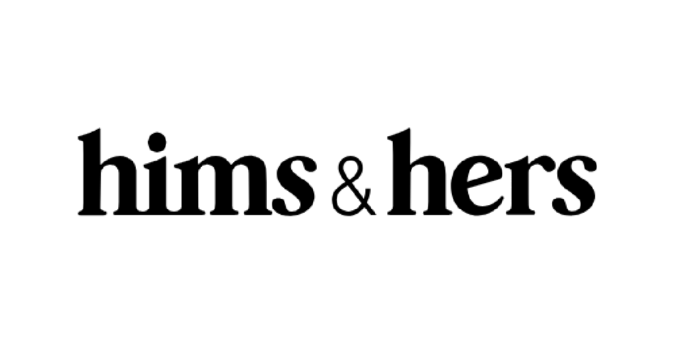$HIMS Valuation Model Amid Uncertainty!
Hims & Hers Health, Inc. ($HIMS) has been a standout in the telehealth and wellness sector, but recent developments have sparked volatility in its stock price. To assess whether $HIMS is a buy, hold, or sell at its current price of $41.98, I conducted a detailed valuation using the Buffett and McGrew Valuation Methods. These discounted cash flow (DCF) models leverage five years of Free Cash Flow (FCF) data to estimate intrinsic value, offering clarity on its investment potential. Below, I break down the results, explain why the McGrew model yields a higher valuation, discuss the company’s uncertain future following a significant partnership fallout, and present the findings in a clear table.
Valuation Process
I used financial data from Hims & Hers’ quarterly cash flow and balance sheet filings, focusing on FCF from 2019 to 2024:
- 2019: -$10.91 million
- 2020: -$5.10 million
- 2021: -$38.82 million
- 2022: -$23.78 million
- 2023: $60.99 million
- 2024: $236.51 million
Shares outstanding, sourced from the Q1 2025 balance sheet, are 223.58 million. The current price of $41.98 reflects a recent plunge, likely tied to market events (more on this later). Both models use an 8% discount rate (4% Treasury + 4% premium) and a 2.5% perpetual growth rate, but their growth assumptions differ, leading to varied outcomes.
Buffett Valuation: Conservative Outlook
The Buffett Valuation Method, inspired by Warren Buffett’s focus on predictable cash flows, starts with the 2024 FCF of $236.51 million. Given $HIMS’s recent FCF surge (287.77% growth from 2023’s $60.99 million to 2024), I classified it as a growth stock, applying a 10% constant growth rate for Years 1–10.
FCF projections begin at $260.16 million in Year 1, reaching $613.44 million by Year 10. The terminal value, calculated as Year 10 FCF × (1 + 2.5%) ÷ (8% – 2.5%), is $11.43 billion. Discounting all cash flows and the terminal value yields a total intrinsic value of $7.92 billion. Dividing by 223.58 million shares gives an intrinsic value per share of $35.43. With a 25% margin of safety, the target price is $26.57.
At $41.98, the stock is 18.49% above the intrinsic value, placing it in the Hold category (6% below to 35% above intrinsic value).
McGrew Valuation: Capturing Growth Potential
The McGrew Valuation Method is designed for growth stocks like $HIMS, allowing a dynamic growth schedule. The 3-year FCF CAGR was skewed by negative FCF in 2022, so I used the 2023–2024 growth rate (287.77%) as a reference, conservatively setting the initial growth rate at 20%. This rate declines linearly over six years to 10% by Year 7, then holds steady through Year 10.
FCF grows from $236.51 million to $283.81 million in Year 1 and $834.66 million by Year 10. The terminal value is $15.56 billion. Discounting these cash flows results in a total intrinsic value of $10.02 billion, or $44.80 per share. With a 25% margin of safety, the target price is $33.60. At $41.98, the stock is 6.29% below the intrinsic value, suggesting a Buy status (7% to 25% below intrinsic value).
Why McGrew Yields a Higher Valuation
The McGrew model’s higher intrinsic value ($44.80 vs. $35.43) reflects its ability to capture $HIMS’s rapid growth. Unlike the Buffett model’s flat 10% growth rate, McGrew starts at 20%, aligning with $HIMS’s recent FCF explosion, and tapers to 10% by Year 7. This front-loaded growth assumption better suits a company in a high-growth phase, like $HIMS in the telehealth market, making McGrew more optimistic about near-term potential.
Uncertain Future After Novo Nordisk Fallout
On June 23, 2025, $HIMS stock plummeted 34.63%, closing at $41.98, after Novo Nordisk terminated a partnership to distribute its blockbuster weight-loss drug Wegovy through Hims & Hers’ platform. Novo Nordisk accused Hims of illegally selling compounded semaglutide (Wegovy’s active ingredient) under the guise of personalization, citing deceptive marketing and patient safety risks. The partnership, announced in April 2025, was seen as a gateway to the booming GLP-1 weight-loss market, with $HIMS generating $200–$225 million from compounded GLP-1 drugs in 2024. CEO Andrew Dudum countered on X, calling Novo’s claims misleading and alleging pressure to steer patients to branded Wegovy. This fallout, combined with $HIMS’s weaker-than-expected Q2 2025 sales guidance ($530–$550 million vs. $565 million expected), raises concerns about revenue growth and regulatory compliance. The loss of Wegovy access could significantly impact $HIMS’s weight-loss segment, adding uncertainty to its FCF trajectory.



Valuation Results Table
| Stock Ticker | Valuation Method | Intrinsic Value per Share | Price with 25% Margin of Safety | Last Closing Price | Valuation Status |
|---|---|---|---|---|---|
| HIMS | Buffett Valuation | $35.43 | $26.57 | $41.98 | Hold |
| HIMS | McGrew Valuation | $44.80 | $33.60 | $41.98 | Buy |
Implications for Investors
At $41.98, $HIMS is a Hold per the Buffett model, suggesting it’s fairly valued but lacks significant upside. The McGrew model’s Buy rating indicates potential value, especially if growth persists. However, the Novo Nordisk fallout introduces risks, as $HIMS’s weight-loss segment faces headwinds. Investors should monitor FCF consistency and regulatory developments. $HIMS’s telehealth platform remains strong, but its ability to pivot will be critical.
Limitations
The analysis used provided financials, limiting real-time price verification. Negative FCF from 2019–2022 complicated CAGR calculations, leading to conservative growth estimates. The 20% initial growth rate in McGrew is cautious given the 287.77% 2023–2024 spike.
#StockMarket #Investing #HIMS #StockValuation #BuffettValuation #McGrewValuation #StockAnalysis #Finance #GrowthStocks #Telehealth
We are not a financial advisers; Do your own research.

